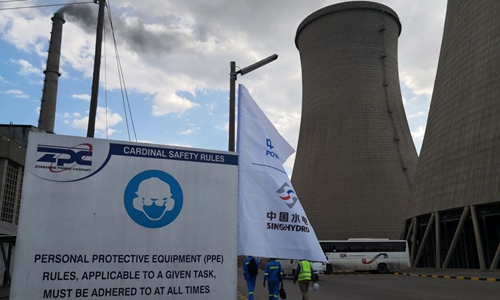HOME >> WORLD
Expansion of Zimbabwe's Hwange power station by Chinese firm on course
Source:Xinhua Published: 2019/12/1 12:45:36

Photo shows the Hwange Thermal Power Station in Hwange, Zimbabwe. (Xinhua/Zhang Yuliang)
Expansion of the Hwange Thermal Power Station by China's Sinohydro now stands at 25 percent, 14 months into the project which will add 600 megawatts into the national grid by 2022.
The 1.5 billion US dollars project entails the addition of two power generating units, Unit 7 and 8 to the existing 6 units that were commissioned between 1983 and 1987.
Along with many others at various stages of implementation, the project is part of Zimbabwe's efforts to find sustainable solutions to its power challenges that are severely curtailing industrial growth and the economy at large.
In an update, the Zimbabwe Power Company (ZPC) said most excavation work had been completed including for the cooling tower, the boiler house and the chimney, state news agency New Ziana reported Friday.
"We have completed all the excavations up to foundation level for Hwange 7 and 8.
"As of this month of November we have done 14 months into our schedule. Our current progress is around 25 percent and we are on target in terms of what we had planned to achieve up to month 14," ZPC said.
The project will take up to 42 months to complete, but unit 7 is expected to start firing by April 2021 while unit 8 would follow later on.
Hwange Thermal Power Station is Zimbabwe's largest coal-fired power generator with installed production capacity of 920 MW.
But due to old age, the plant's current dependable capacity is around 600 megawatts.
In addition to the Kariba South Hydro-power Extension Project, which was completed in March 2018 also by Sinohydro, the Hwange expansion project is expected to substantially add to the national power grid and lift the nation out of the current power woes.
Zimbabweans are having to endure long hours of load shedding every day due to depressed generation capacity and limited ability to import power from regional neighbors.
Posted in: AFRICA